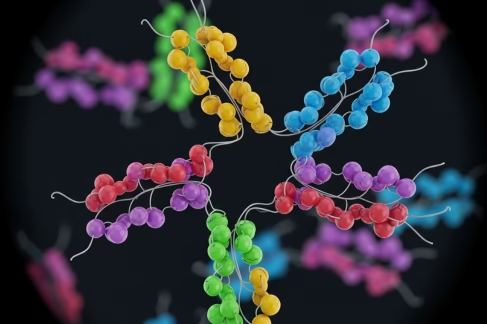Pathogenic microorganisms, such as bacteria, viruses, fungi, or parasites, cause infectious diseases. These microorganisms enter the body, multiply, and disrupt normal functions.
Although anyone can get affected by these diseases, people with weaker immune systems are at higher risk. These diseases can spread, directly or indirectly, from one person to another. In addition, environmental sources like contaminated water, food, or insect bites also contribute to infectious diseases.
Early and accurate detection is key to controlling their spread. Here is where immunoassays come into play.
What are Immunoassays?
Immunoassays are lab techniques used to detect and measure proteins, hormones, pathogens, or antibodies in a biological sample, like blood, urine, or tissue. These techniques rely on the antibody-antigen interactions.
Common immunoassays are:
- ELISA
- Western Blot
- Radioimmunoassay
- Fluoroimmunoassay
- Lateral Flow Assay
What are Secondary Antibodies and Their Role in Immunoassays?
Secondary antibodies are designed to bind to primary antibodies. Unlike primary antibodies that directly bind to the target antigen, secondary antibodies recognize and bind to the Fc region of primary antibodies. As a result, they amplify the detection signal.
These antibodies are usually conjugated with enzymes, fluorophores, or radioactive labels that produce a signal. The signal is usually proportional to the concentration of substances, such as proteins, hormones, antibodies, etc., present in the sample.
Secondary antibodies are known for:
- Signal Amplification
- Versatility
- Cost-effectiveness
- Flexibility
For instance:
The monkey ads-UNLB secondary antibody is commonly used in ELISA protocols during research involving non-human primates like monkeys. These tests help detect antibodies or antigens related to various infectious diseases, such as:
- HIV/AIDS
- Ebola virus
- Zika virus
- Dengue fever
- Tuberculosis
- Hepatitis B and C
- Malaria
- COVID-19
What is the Role of Secondary Antibodies in Improving Test Sensitivity?
Amplify Weak Signal
In many infectious disease diagnostics, especially in early-stage infections, the concentration of the pathogen is extremely low. Detecting these small amounts of antigen or antibody requires amplification of the detection signal to produce a readable output.
Secondary antibodies conjugated to enzymes like HRP (horseradish peroxidase) or AP (alkaline phosphatase) catalyze colorimetric or chemiluminescent reactions. Since multiple secondary antibodies can bind to one primary antibody, the resulting signal is amplified many times over. This allows researchers to detect low concentrations of infectious agents.
Increase Specificity and Reduce Background Noise
Secondary antibodies can also improve specificity in infectious disease tests. They help minimize cross-reactivity, especially when carefully selected and properly matched to the species and isotype of the primary antibody. As a result, this helps reduce the chances of wrong results.
Additionally, high-quality secondary antibodies are affinity-purified. So, they show low non-specific binding. This helps reduce background noise and makes the positive signals clearer and easier to interpret.
Facilitate Multiplexing in Complex Samples
In multiplex immunoassays, where multiple targets in the same sample are detected, secondary antibodies labeled with different enzymes or fluorophores allow simultaneous detection of multiple antigens or antibodies.
This capability helps diagnose co-infections, such as HIV and tuberculosis, or dengue and Zika. In these diseases, symptoms may overlap and make it difficult to distinguish between disease types. At times, scientists use well-designed secondary antibodies to perform a comprehensive analysis using just a small sample.
Improve Visualization Techniques
Secondary antibodies play a vital role in imaging and visualization-based detection. They give a strong and bright signal in some lab tests, like fluorescent or glowing (chemiluminescent) tests. This signal helps scientists see where infection markers are inside cells or tissues.
For example:
- In immunohistochemistry (IHC) or immunofluorescence (IF), secondary antibodies are joined with fluorescent dyes. These dyes light up the spots where the infection is. This helps show where the virus or bacteria are in a tissue sample.
- In Western blotting, secondary antibodies help make clear, sharp bands. These bands show which proteins are present. This helps find proteins that are linked to a disease-causing germ.
The Bottom Line
Now that you know how secondary antibodies improve sensitivity in infectious disease, what are you waiting for? Buy secondary antibody for your experiment from a reliable source and ensure you get accurate results!







